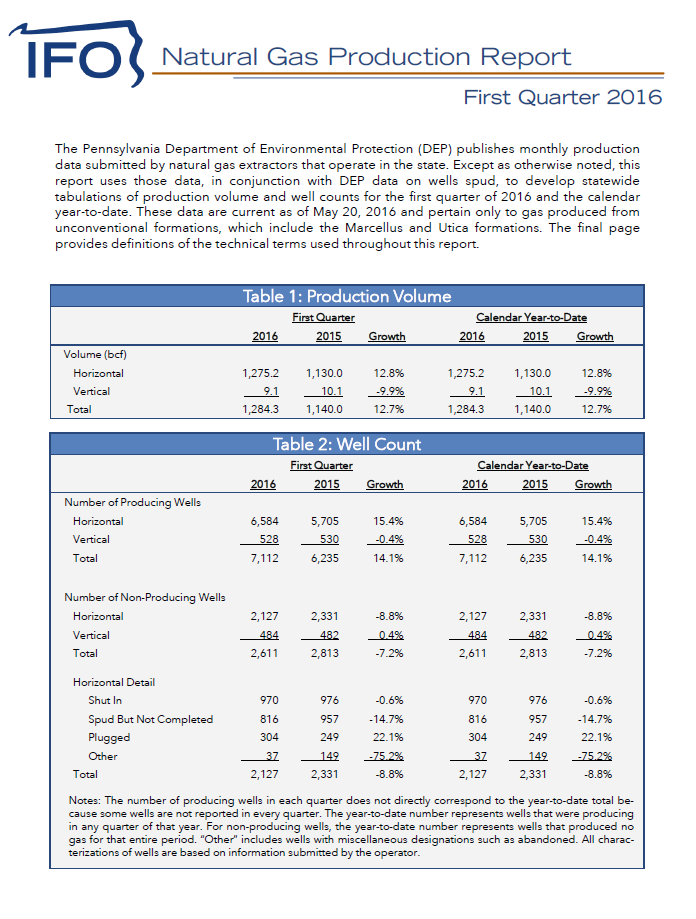Natural Gas Production Report, 2016 Quarter 1
May 26, 2016 | Energy

The Pennsylvania Department of Environmental Protection (DEP) publishes monthly production data submitted by natural gas extractors that operate in the state. Except as otherwise noted, this report uses those data, in conjunction with DEP data on wells spud, to develop statewide tabulations of production volume and well counts for the first quarter of 2016 and the calendar year-to-date. These data are current as of May 20, 2016 and pertain only to gas produced from unconventional formations, which include the Marcellus and Utica formations. The final page provides definitions of the technical terms used throughout this report.
During the first quarter of 2016, year-over-year production volume from horizontal wells increased 12.8 percent. Production gains were driven by wells spud in 2014. In that year, 1,352 wells were spud, of which 1,006 (74.4 percent) produced gas in the first quarter of 2016. These wells comprised slightly less than one-third (31.1 percent) of total production. The term “spud” denotes the beginning of the drilling process, and there is often a substantial lag before a well produces output. For example, 784 wells were spud in 2015, but only 219 (27.9 percent) produced gas in the first quarter of 2016.
Susquehanna County was the top producing county in the state, representing nearly one quarter of all horizontal well production. Seven of the top ten producing counties registered production gains, while three counties (Bradford, Lycoming and Tioga) recorded declines.
Between 2011 and 2015, annual production increased at an average rate of 44.5 percent per annum. However, beginning in the first quarter of 2015, the number of new wells spud began to decline significantly. Therefore, the increase in production for the first quarter of 2016 derived from a combination of (1) increased efficiency of new wells and (2) non-producing wells being brought into production. The total number of shut-in and spud but not completed wells increased through 2015. Shut-in wells and spud but not completed wells peaked in the third and first quarters of 2015, respectively. The first quarter of 2016 represents year-over-year and quarterly declines for these categories of wells.